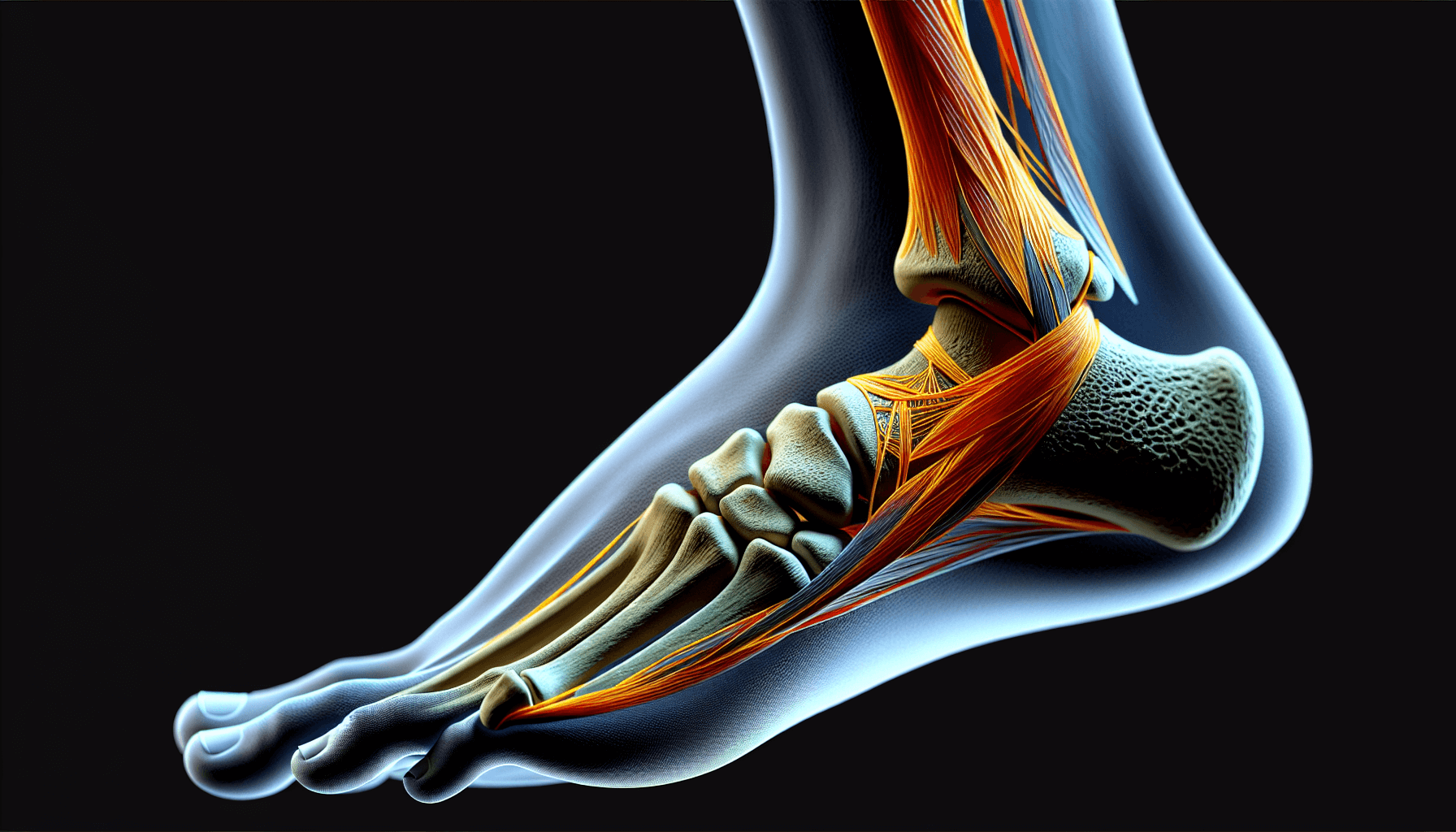Essential Facts About Foot Surgeries You Should Know


Considering foot surgery? Our comprehensive guide explores the essential details you need to know—from what conditions warrant surgical intervention to the various procedures and recovery insights. Whether it’s debilitating pain, structural deformities, or injuries that haven’t responded to conservative treatments, foot surgeries can offer relief and restore function. Read on to discover how orthopedic, podiatric, vascular, and general surgeons can help and what your surgical journey might entail.
Key Takeaways
Foot surgery is generally recommended after alternative treatments fail, with recovery often requiring a cast and limited mobility. Orthopedic, podiatric, vascular, and general surgeons are key healthcare providers in diagnosing and treating a range of foot and ankle issues using both surgical and conservative methods.
Achilles tendon injuries, ranging from mild strains to complete ruptures, may necessitate different surgical repairs, with recoveries lasting 4 to 6 weeks. Post-surgery recovery is crucial and might include rest, elevation, and special exercises depending on the occupation.
Bunion surgery, aimed at relieving pain by removing bunions and realigning bones, requires a recovery of 6 to 12 weeks; plantar fasciitis surgery is considered when non-surgical treatments do not suffice. Reconstructive foot surgery addresses a variety of conditions like complications of diabetic neuropathy, whereas ankle surgery, including arthroscopy, fusion, and replacement, treats severe ankle problems. Foot fractures and metatarsal issues often necessitate surgical correction for pain relief and mobility restoration.
Foot and ankle surgery explained: conditions, procedures, and recovery basics
Foot surgeries are medical procedures designed to correct injuries, deformities, or chronic conditions affecting the feet. The type of surgery depends on the condition. Some focus on relieving pain, while others restore mobility or improve foot structure. While non-surgical treatments like physical therapy and orthotics are often the first step, surgery becomes necessary when these options no longer work.
Foot surgery is typically recommended when alternative treatments have proven ineffective. Procedures may be conducted in a hospital or an office under local anesthetic. Recovery may entail a temporary cast and a period of restricted mobility.
A diverse array of foot and ankle problems, both surgical and non-surgical, fall under the expertise of orthopedic, podiatric, vascular, and general surgeons. These healthcare experts are instrumental in foot health maintenance, addressing issues related to:
the bones
joints
muscles
tendons
ligaments
Of the foot and ankle joint, including the heel bone and the tibialis posterior tendon. Foot and ankle injuries are a common concern.
Related article: How Long Is Ankle Surgery Recovery?
Understanding When Foot Surgery Is Your Best Option
Deciding to undergo surgery is not a decision to be taken lightly, and foot surgery is no exception. So, when is foot surgery your best option? The answer lies in the nature and severity of your condition.
Conditions that may require surgical intervention include:
Severe foot pain
Toe deformities
Foot conditions unresponsive to conservative treatments
Rheumatoid arthritis
Untreatable foot infections and osteomyelitis
Surgical intervention is also frequently necessary for severe ankle injuries.
If you continue to experience significant symptoms that disrupt your daily activities after a prolonged period of time of conservative treatment or non-healing foot infection especially from diabetes, foot surgery should be considered. Guidance through this decision-making process will be provided by your surgeon, who will confirm if surgery is indeed the most suitable option for your specific condition.
Navigating Different Surgical Procedures
From Achilles tendon repair to bunion surgery, the world of foot and ankle surgery is vast and varied. Each surgical procedure is tailored to target specific conditions and injuries.
For instance, Achilles tendon repair surgery involves making an incision in the back of the calf and stitching the torn tendon back together. Bunion surgery, on the other hand, entails the removal of bony foot protrusions, realigning the bone, and repairing the surrounding soft tissues.
Furthermore, a frequently performed foot surgery plantar fasciitis patients undergo is fasciotomy. This process entails the cutting and release of the plantar fascia on the sole of the foot to reduce tension and pain. Endoscopic Plantar Fasciotomy (EPF) is another alternative; this minimally invasive procedure involves small incisions at the base of the plantar fascia.
The Role of Surgeons in Foot Health
The maintenance of foot and ankle health largely depends on the skills and expertise of orthopedic, podiatric, vascular, and general surgeons. Their training and expertise allow them to diagnose and treat a wide array of foot and ankle conditions. These healthcare professionals undergo rigorous training, including a residency in their field of surgery, to specialize in foot and ankle treatment. This equips them with the ability to address various foot and ankle conditions such as:
arthritis
bursitis
bunions
Hammertoe
Diabetes complications
They utilize both surgical and non-surgical interventions to provide the best possible care for their patients.
Surgeons who care for foot and ankle problems:
Conduct in-office examinations
Use medical imaging tests such as X-rays, MRIs, and CT scans to provide accurate diagnoses of conditions
Play a significant role in assisting patients through their healthcare journey, from diagnosis to treatment.
Achilles Tendon Woes: Repairing the Body's Largest Tendon

The Achilles tendon, the thickest and strongest tendon in the human body, plays a crucial role in our ability to walk and run. Unfortunately, it’s also prone to injuries, which can cause significant pain and mobility issues. Let’s explore the world of Achilles tendon injuries and the path to recovery.
Injuries to the Achilles tendon can vary in severity, ranging from a mild strain to a complete rupture, such as a torn Achilles tendon. Symptoms may include:
Sudden pain down the back of the leg or near the heel
Heightened pain during activity
Stiffness or tenderness along the tendon
Swelling
If you’re experiencing any of these symptoms, seeking medical advice is crucial.
From Strain to Rupture: Treating Achilles Tendon Injuries
The impact of Achilles tendon injuries on your mobility and quality of life can be substantial. Understanding these injuries and their treatment options is key to managing pain and regaining normal foot function.
Conservative treatments for Achilles tendon injuries encompass rest, ice application, and over-the-counter pain medication. However, in cases of severe injuries or when these treatments fail to provide relief, surgical intervention may be necessary. Surgical options include Achilles tendon repair surgery, percutaneous repair, open repair, and in some cases, tendon transfer.
Achilles ruptures often, but not always, occur during sports activities. Signs of a ruptured Achilles tendon may include sudden and severe pain in the back of your ankle or calf—often described as a "pop" or a "snap"—swelling, difficulty walking, and an inability to stand on the toes of the affected leg. If you suspect you've ruptured your Achilles, it's crucial to seek immediate medical attention. Typically, if surgery is required, it is scheduled as soon as possible, often within a week of injury, to maximize the chances of a successful recovery.
The Surgical Path to Recovery
The path to recovery post an Achilles tendon repair surgery can be a lengthy one. However, with the right care and patience, you can regain your mobility and return to your normal activities.
Typically, the recovery period post Achilles tendon repair surgery spans 4 to 6 weeks. However, this timeframe may differ depending on individual circumstances and occupational demands. Some individuals may resume desk jobs in as little as 1 to 2 weeks. It’s vital to follow your surgeon’s advice and take it slow to ensure a successful recovery.
Bunion Surgery: Alleviating Pain at the Big Toe Joint

Bunions, the bony bumps forming at the base of the big toe joint, can cause substantial pain and discomfort. They may impact walking and wearing shoes comfortably, affecting daily activities. Bunions typically develop from pressure on the big toe joint, which causes the big toe to lean towards the other toes. This pressure can be due to inherited structural defects, medical conditions such as arthritis, or from wearing tight, narrow shoes. Bunion surgery is a procedure that offers relief by removing these bumps and realigning the bone.
Bunion surgery, or bunionectomy, involves the removal of the bunion and realignment of the bone. It’s typically recommended for individuals who experience substantial foot pain that impacts their daily activities, those with toe deformities, and cases where there is an inability to bend and straighten the big toe.
Identifying Candidates for Bunion Surgery
Bunion surgery isn’t for everyone. Identifying the right candidates for this procedure is crucial to ensure successful outcomes.
Symptoms that suggest you might be a candidate for bunion surgery include:
Severe or worsening deformity
Calluses from toes rubbing
Burning sensations
Numbness
Difficulty finding comfortable shoes
Persistent pain at rest
If these symptoms sound familiar, you may want to consider discussing bunion surgery with a healthcare professional.
Life After Bunion Surgery
For those who have been enduring chronic pain and discomfort, life post bunion surgery can offer a much-needed relief. With the right care and recovery plan, you can get back on your feet and enjoy a pain-free life.
The typical recovery time following bunion surgery ranges from six to 12 weeks. During this period, it’s important to rest, elevate the foot, and follow your surgeon’s instructions. This will help ensure a successful recovery and reduce the risk of complications.
Plantar Fasciitis Relief: When Surgery Is the Answer

Plantar fasciitis, a common cause of heel pain, can greatly impact your quality of life. Plantar fasciitis is a condition distinguished by inflammation in the plantar fascia, a thick band of tissue that stretches from your heel bone to your toes on the sole of the foot. It's often caused by strain injury causing micro tears to the ligament as it attaches to the heel bone or other areas of tightness on the sole of the foot. Factors that can increase your risk of developing plantar fasciitis include age, certain types of exercise, faulty foot mechanics, obesity, and occupations that keep you on your feet. While conservative treatments are effective for many, some may require surgical intervention.
Conservative Treatments vs. Surgical Intervention
When it comes to treating plantar fasciitis, surgery isn’t always the first line of treatment. Conservative treatments such as applying ice, performing stretching exercises, and using orthotics can often alleviate the symptoms.
However, when conservative treatments don't provide enough relief, surgery may become a viable option. The Endoscopic Plantar Fasciotomy (EPF) is one such surgical treatment. This procedure involves making small incisions on either side of the heel to insert a tiny camera, or endoscope, and small surgical instruments. The surgeon then visualizes the plantar fascia on a screen and cuts a part of it to relieve tension and reduce pain. This procedure is minimally invasive and has a success rate of approximately 87%.
Post-Surgery Expectations for Plantar Fasciitis Patients
Life after plantar fasciitis surgery is a journey towards recovery. Understanding what to expect post-surgery can help you prepare for this journey and ensure a successful recovery.
Following plantar fasciitis surgery, the recovery duration is typically around 6 to 12 weeks. It’s important to follow your surgeon’s post-operative instructions and to participate in physical therapy if recommended. This will help you regain strength and flexibility in your foot and return to your normal activities.
Reconstructive Foot Surgery: Restoring Function and Form

Reconstructive foot surgery comprises a range of procedures designed to restore your foot’s normal function and structure. Whether it’s correcting deformities or treating birth defects and injuries, these surgeries can help improve your quality of life. Flat feet reconstructive surgery is a good example of this.
Types of Reconstructive Foot Procedures
Reconstructive foot surgery encompasses a variety of procedures. Each procedure is designed to target a specific condition or deformity, providing patients with relief from pain and improved mobility.
Among the prevalent types of reconstructive foot procedures are bunion surgery, Achilles tendon repair, plantar fasciitis surgery, bone fusion, amputation, and bone osteotomy. Other procedures may include bone grafting, tendon and ligament procedures, and skin or soft tissue repair.
Achieving Stability and Mobility Post-Reconstruction
Post reconstructive foot surgery, the recovery process plays a critical role in regaining stability and restoring mobility. Each patient’s recovery timeline will vary, but with proper care and rehabilitation, you can expect to regain normal function in your foot.
Exercise is an integral part of the recovery process. Low impact exercises like stationary biking or swimming can help improve mobility. A comprehensive exercise program focusing on strengthening and stretching the muscles and tendons of the lower leg, feet, and ankles is beneficial.
Ankle Surgery: From Arthroscopy to Ankle Fusion and Replacement
A variety of ankle conditions can be addressed through ankle surgery. From the minimally invasive ankle arthroscopy to the more advanced ankle fusion and replacement surgeries, these procedures can greatly improve your quality of life.
Insights into Ankle Arthroscopy
A variety of ankle conditions can be accurately diagnosed and treated using the minimally invasive procedure of ankle arthroscopy, which is a surgical procedure that uses a small camera and surgical instruments to inspect or address issues within or around the ankle. Its minimally invasive nature means shorter recovery times and less discomfort for patients.
Post ankle arthroscopy, the expected recovery period spans a few months. During this time, it’s important to engage in low-impact exercises and gradually reintroduce regular activities as advised by your surgeon. This will ensure a smooth recovery and successful outcome.
Advanced Ankle Surgeries: Fusion and Replacement
Ankle fusion surgery and replacement surgeries are more complex procedures typically recommended for individuals with severe ankle arthritis. These surgeries can significantly improve mobility and reduce pain. However, they are major surgeries and come with potential risks and complications.
As such, they are typically considered after conservative treatments have failed to provide relief.
Addressing Metatarsal and Other Foot Surgeries
Significant discomfort and mobility impairment can be caused by foot fractures and metatarsal issues. The metatarsal bones are a group of five long bones in the foot, located between the tarsal bones of the hind- and mid-foot and the phalanges of the toes. They are numbered from one to five, with the first metatarsal connected to the big toe being the thickest and the fifth metatarsal connected to the little toe being the smallest. These bones play a crucial role in balance and gait, absorbing and distributing the weight of the body across the foot. Injuries, infection, and/or deformities to these bones can greatly affect a person's ability to walk and stand. In such cases, surgery often proves to be the most effective treatment option.
Metatarsal Bone Corrections
Surgical procedures designed to rectify deformities or misalignments in the foot’s metatarsal bones are known as metatarsal bone corrections. This procedure, also referred to as metatarsal foot surgery, can help alleviate discomfort and enhance functionality.
The surgical options for treating metatarsal joint dislocation, diabetic deformities, and other metatarsal issues vary depending on the severity of the condition. These might include amputation of the affected bone, and procedures such as osteotomy, where the surgeon makes incisions in the bone to reposition it, potentially reducing its length to alleviate discomfort in the foot.
On the other hand (or foot...), foot fractures may require more intensive surgical treatments depending on the extent of the injury.
Comprehensive Care for Foot Fractures
Your mobility and quality of life can be significantly affected by foot fractures. Understanding the surgical treatments available can help you make an informed decision about your healthcare.
Surgical treatments for foot fractures involve:
Making an incision in the skin over the fractured bone
Exposing the fracture
Realigning the bone fragments
Securing them with implants such as pins, wires, screws, and plates
The recovery period can be lengthy, but with proper postoperative care, patients can expect to regain normal function in their foot.
...And If You Could Use More Support
Deciding to undergo surgery isn't an easy decision, and it's important to consider not just the physical aspects of the procedure and recovery, but also the mental and emotional aspects. That's where holistic care programs like Ready Set Recover come into play. Ready Set Recover is designed to complement the work of surgical staff, providing additional support and resources to patients during their recovery journey and preventing future development of foot and ankle issues.
For one, it can help patients feel more in control of their recovery process, leading to less stress and anxiety. It also helps patients understand what to expect during recovery, which can reduce fear and uncertainty. In essence, Ready Set Recover is a valuable tool for anyone undergoing surgery.
Life After Foot Surgeries: Healing and Recovery
We’ve journeyed through the world of foot and ankle surgery, exploring the various procedures available to treat conditions ranging from bunions to Achilles tendon injuries. The path to recovery may be long, but with the right surgical intervention and postoperative care, you can regain mobility and return to a pain-free life.
Related Articles
Flat Footed Surgery: A Comprehensive Guide to Outcomes and Recovery Time
Ankle Surgery: What to Expect and Tips for a Smoother Healing Process
Frequently Asked Questions
What kind of surgery is done on feet?
Foot surgery encompasses a wide range of procedures aimed at addressing various foot conditions. These can include surgeries for Achilles tendon repairs, bunion removal, plantar fasciitis treatment, reconstructive foot surgery for deformities, injuries, complications from diabetes, and procedures for addressing severe ankle issues like ankle arthroscopy, fusion, and replacement.
What is the minimally invasive surgery for a fractured foot called?
The minimally invasive surgery for a fractured foot is called percutaneous fracture fixation, which offers advantages such as smaller incisions, less tissue trauma, and reduced pain post-surgery.
What is the purpose of reconstructive foot surgery?
The purpose of reconstructive foot surgery is to restore as normal function as possible to a structurally compromised foot or ankle. This type of surgery aims to improve the overall function and mobility of the affected foot or ankle.







